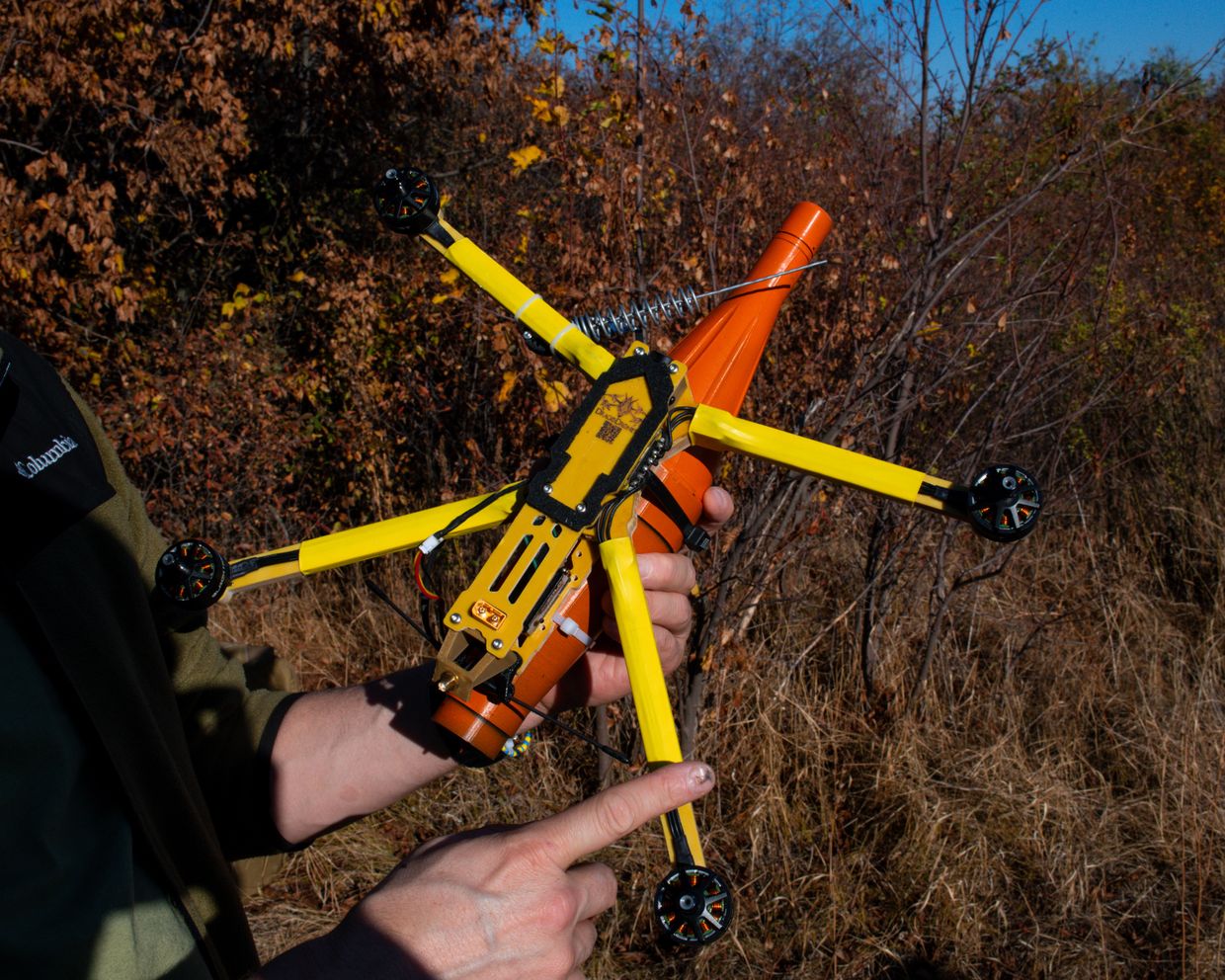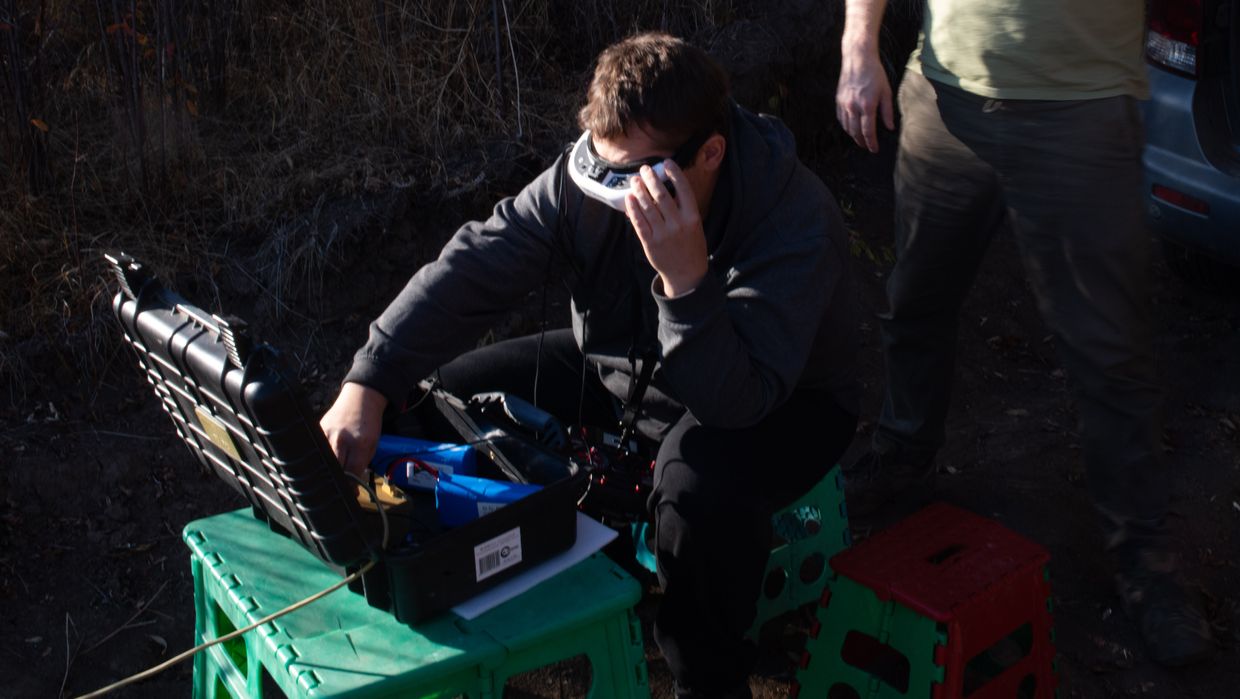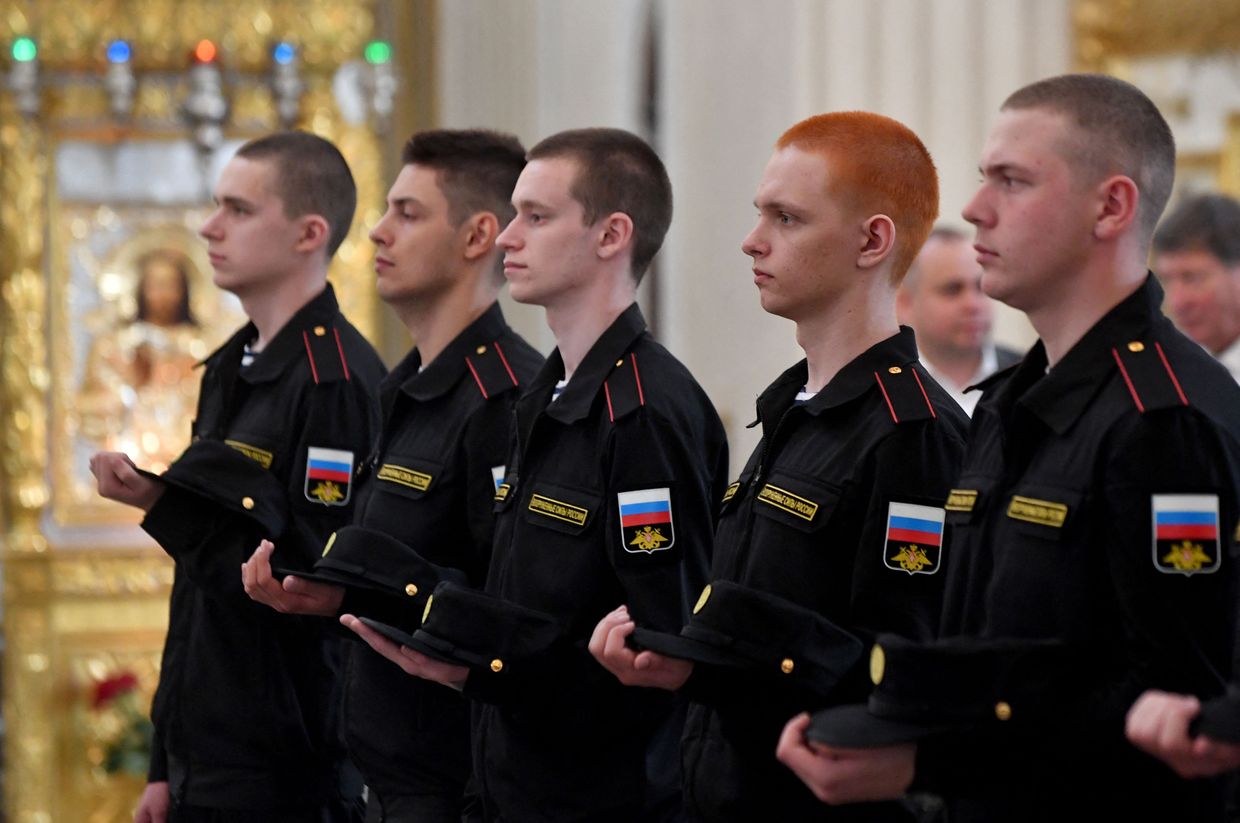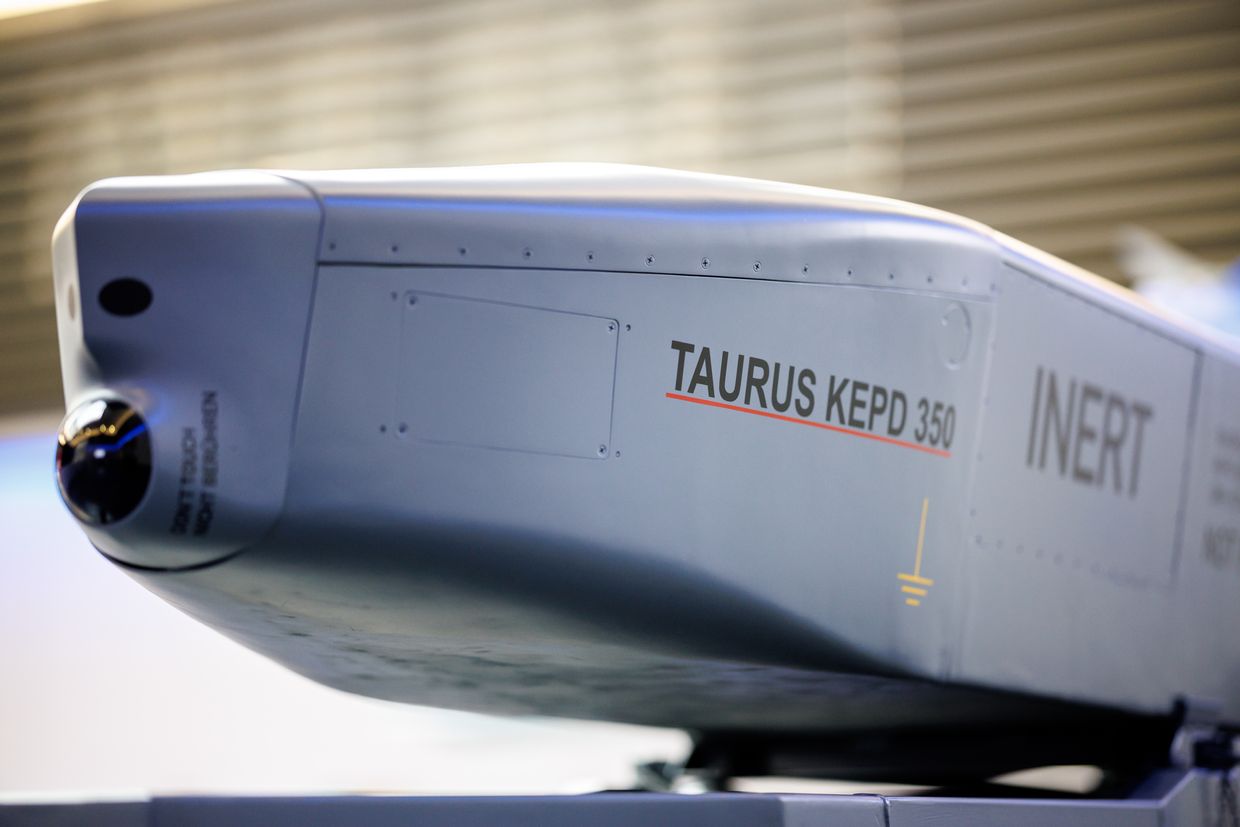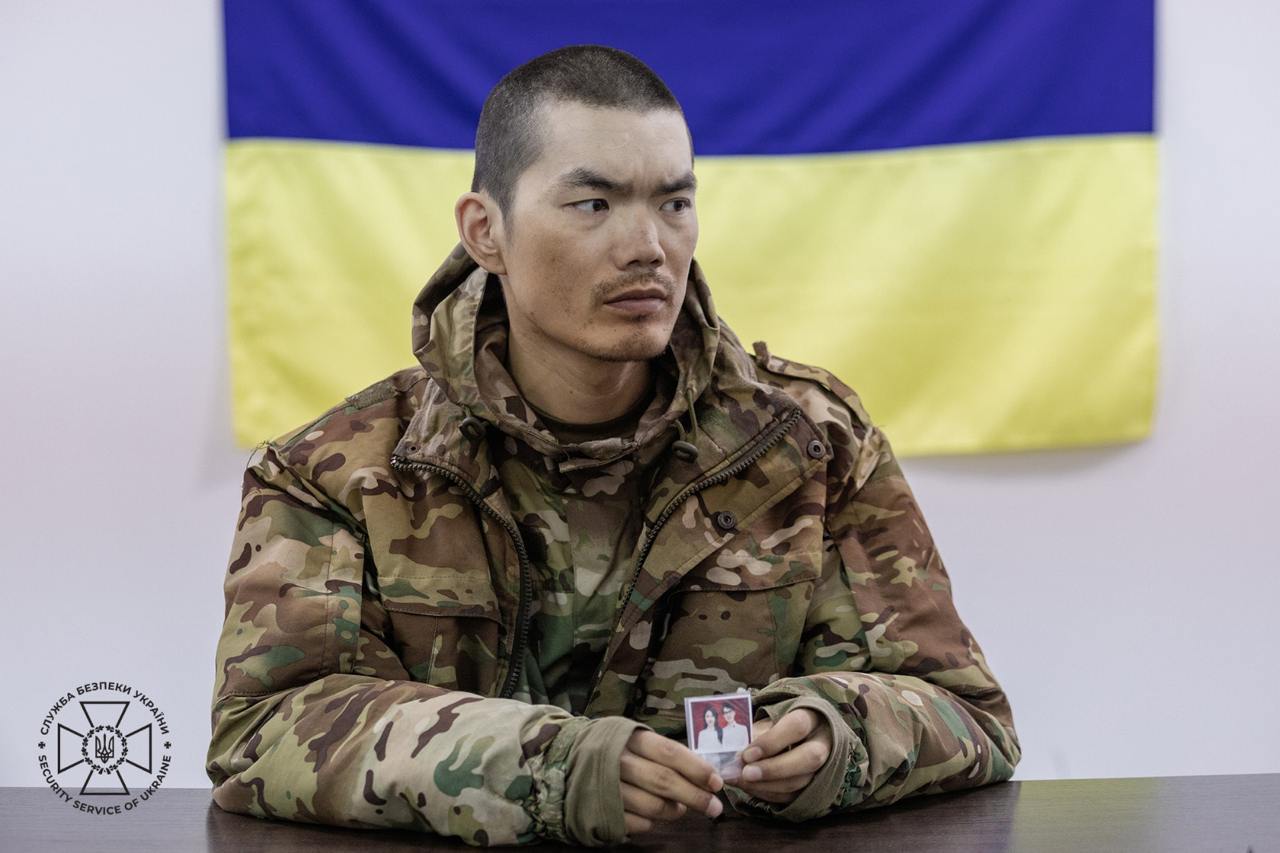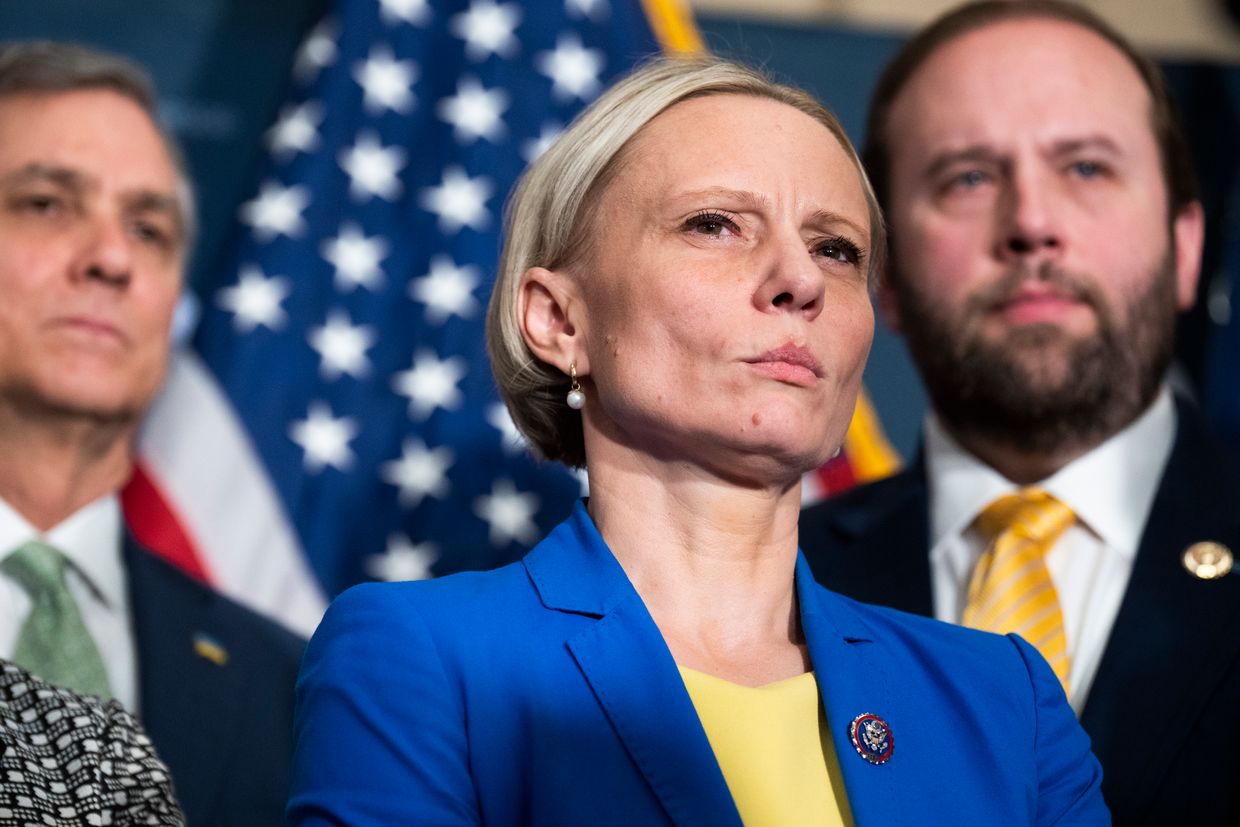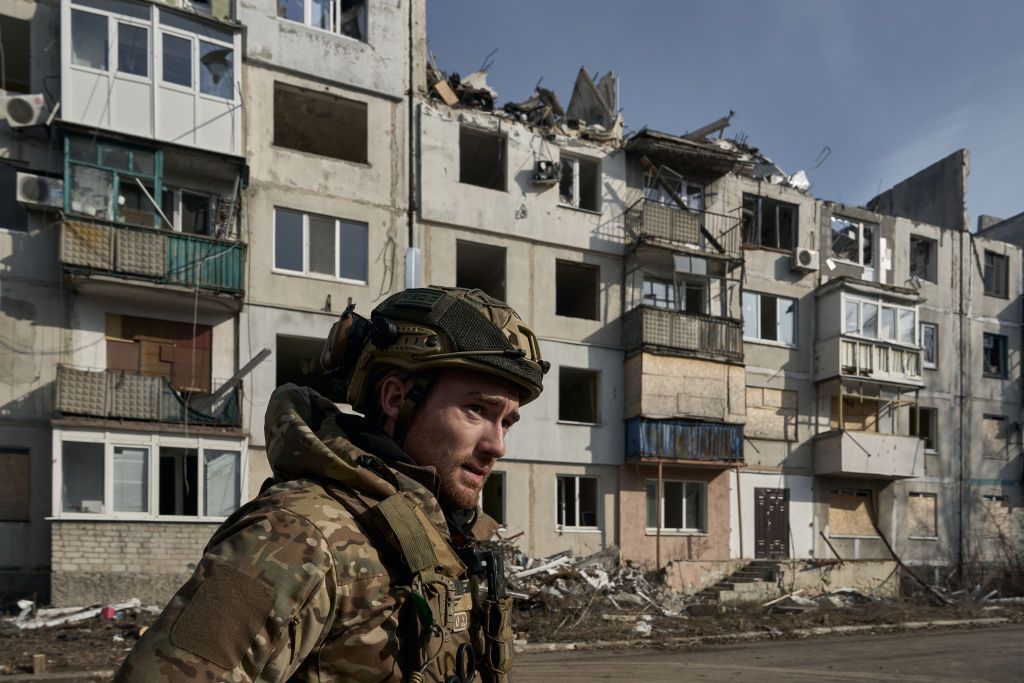Some 25 miles south of Ukraine's border with Russia, explosions rumble off in the distance more or less continuously.
“We don’t even hear them anymore,” Zhenya chuckles from under first-person-view (FPV) goggles branded with the U.S. company “Fat Shark.”
Zhenya and his co-developer for DragoDrones, or DCU, Maksym, are testing a stack of small FPV drones in a field in Kharkiv Oblast. They asked not to be identified by last name, due to the proximity of their workshops to Russian air power.
Most of the drones they made themselves. One is of ambiguous Chinese provenance — unmarked, maker unknown, and most importantly, not working.
Zhenya launches the drone into a couple of neat somersaults before sending it off into the distance. Around three kilometers away, Maksym gestures to a screen. The video is clipping out.
It’s the bug that a brigade holding thousands of these drones has asked them to fix, explains Maksym: A faulty video transmitter, a cheap under-tested gadget that they're now replacing.
It’s a persistent problem with the drone supply to Ukrainian troops: Imported Chinese drones are often laden with defective parts. And while they have typically been cheap enough to merit replacing, China is actively cutting off its exports of components and materials critical to drone building.
In the face of these threats, Ukraine’s drone industry is increasingly onshoring the production of more ambitious components. And they’re getting better than anyone expected at building even the trickier gadgets needed to keep Ukraine’s army of drones in flight.
"We cannot rely on a Chinese supply chain," says Denys Nikolayenko, who makes high-end thermal cameras for drones, from an office in Kyiv.
Ukraine's native drones
The first drones to see mass use in Ukraine following Russia’s invasion in February 2022 were cheap, off-the-shelf Chinese imports.
As the country realized the importance of these new weapons, Ukraine began building out its local drone manufacturing in the early months of the war. Thanks to heavy investment in the industry, a major proportion of drones on the front today are Ukrainian-made.
The components of those drones are a different matter. China’s chokehold on the supply chain has been a source of persistent alarm. Nataliia Kushnerska, head of Ukrainian defense tech hub Brave1, identified the “particular dependence on China” as one of the three biggest problems in Ukraine’s drone industry, speaking to Forbes Ukraine last November.
China made headlines in Ukraine for restricting drone components at the outset of September. Recent reports show China has already begun curbing sales to American and European drone makers and is readying more sanctions.
Zelensky addressed the nation referring to the Chinese controls announced in September, alluding to Ukraine’s new self-reliance: "Some of the largest state exporters of drone components are instituting export controls. We know what to do so that these controls don't become a critical threat to us."
"Some of the largest state exporters of drone components are instituting export controls. We know what to do so that these controls don't become a critical threat to us."
China sanctioned U.S. drone company Skydio in late October, barring Chinese manufacturers from selling to the firm. Skydio’s dependence on Chinese components, particularly motors, has led to backups at the firm. It has also exposed China’s readiness to weaponize its dominance in unmanned weapons.
“This is a clarifying moment for the drone industry,” Skydio CEO Adam Bry wrote to customers. “If there was ever any doubt, this action makes clear that the Chinese government will use supply chains as a weapon to advance their interests over ours.”
Ukraine’s manufacturers have gotten remarkably adept at replicating Chinese drone functionality at home, both out of concern for cost and concerns about China’s loyalties to Russia.
Herman Smetanin, minister of Strategic Industries, announced early in November that Ukraine had developed a “Shmavic,” a local copy of the DJI Mavics that were the first drones to see wide use following Russia’s full-scale invasion.
But the focus on the more minute elements within the supply chain for drone production is a newer phenomenon.
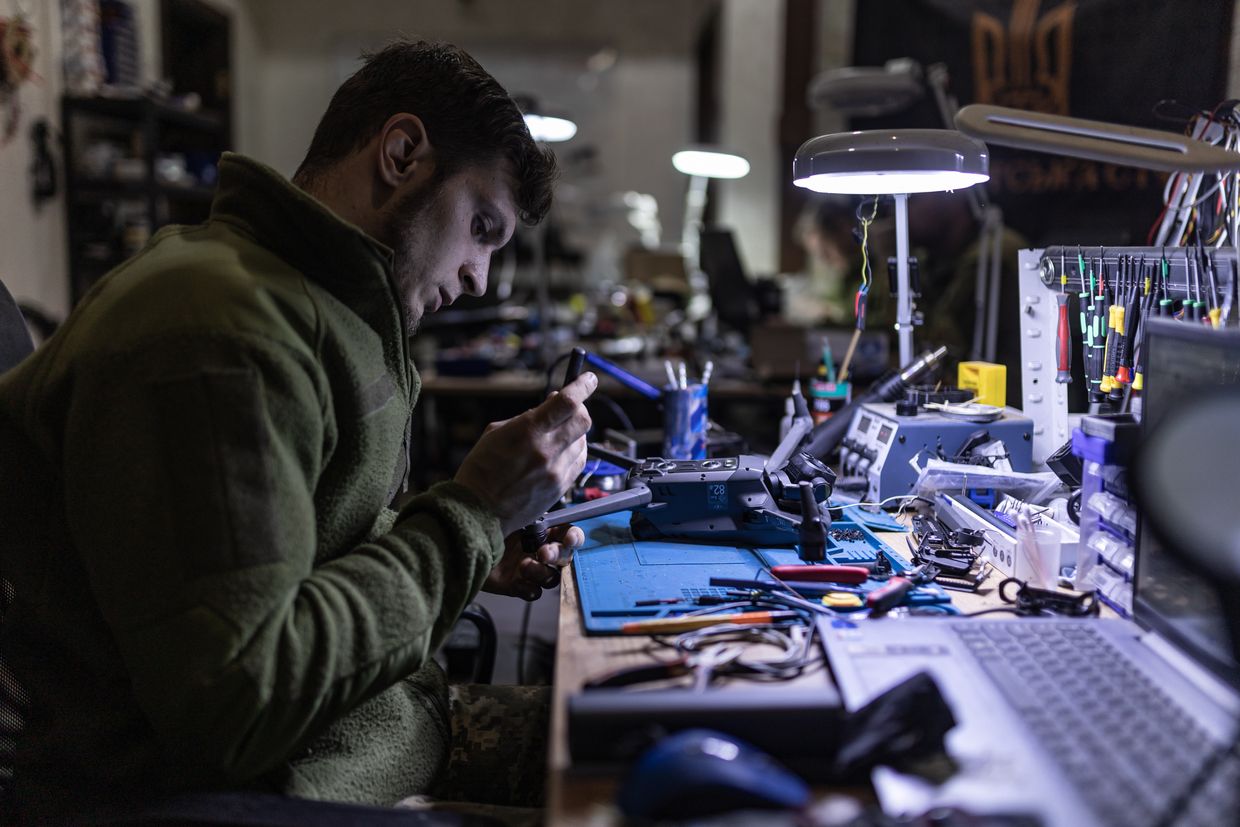

Producers like Zhenya and Maksym are increasingly equipping their own drones with parts made at home. Beyond their own frames routed out of Kharkiv-sourced foam plastic and 3D-printed fasteners, they recently got a Ukrainian computer numerical control machine — essential for precise tooling — and have begun buying motors from a new Ukrainian supplier.
The pair's drones run between $300 and $600, making them cheaper than off-the-shelf FPVs or Mavics with which they compete on function. Maksym and Zhenya have a lot more at stake in keeping those explosions from coming any closer than DJI or Autel do.
Beyond drone-specific components, China is also tightening controls on key raw materials, especially rare-earth metals key to certain higher-end gadgets on a drone.
"Before 2023 you could just buy germanium from China without any export controls or whatever procedures on Alibaba, two weeks later you got your germanium bricks here in Kyiv," reminisces Nikolayenko. "But in 2023 they started to control it."
NIkolayenko’s company, Oko Camera, needs germanium to make thermal lenses for drones. Despite being the Ukrainian word for “eye,” Oko is cautious about being overly visible as a company. Russian airstrikes remain a threat to local manufacturers, even those based in the Kyiv region. Oko lenses are maybe most famous for being the visual guidance of Ukraine's famous "Baba Yaga" drones, so dubbed by Russian soldiers after a mythical witch due to their ability to strike on the gloomiest of nights.
Displaying a trio of their lenses on a desk. Nikolayenko and his business manager, Nazariy Nikolaychuk, note that they’ve built many of their own machining tools, and specifically worked out an independent calibration process.
“The benefit is that actually you ensure the quality of the image of each camera that you produce, and this is not the case for some Chinese cameras. This makes us different,” says Nikolayenko.
The images are undoubtedly crisp, showing the twigs on trees and soldiers behind them, and even the thermal differential between hair and skin.
Long-term, Ukrainian drone makers are keen to sell to Western buyers, particularly after a ceasefire allows them to export. With increasing volleys of sanctions, many are betting that NATO will increasingly see Chinese parts, particularly the higher-tech ones, as a disqualifying feature for would-be suppliers.
Stay warm with Ukrainian traditions this winter. Shop our seasonal merch collection.
The plane in Ukraine falls gently on the chain
Nonetheless, there remain enduring concerns that many “Ukrainian-made” drones are Chinese imports barely modified and sent out to the front.
“They say the government bought a bunch of drones. The fact is, they bought them from China and stuck on some stickers of their own. And then they don’t work,” says Maksym.
And while local producers are trying their hands at new links in the supply chain, the most and least complicated elements still depend heavily on imports.
For Oko, the sensors remain strictly European. Though Nikolayenko says they’ve built some of their own machining tools, most manufacturers of everything within Ukraine remain dependent on imported machining tools — traditionally Chinese, but increasingly Indian and, for those who can afford it, European.
But for the cheapest components, simple base-line products like transistors, circuit boards, wiring, or solar cells, nobody can yet step up to the scale of China’s mass production.
While DragoDrones 3D-prints some of the components, and are prototyping more, the problem is not cost so much as speed. They lament that despite their clever workarounds, localized mass production within Ukraine was a pre-war casualty of bad policy.
“Production capacity is much bigger in Russia, plus China. In Ukraine, over the last fifteen years, they closed down the production of all the little electronics — at the hands of both our government and the Russians doing the financing,” says Zhenya.
“(The Russians) copy what we make, for the most part,” says Maksym. “We were the ones who started using drones because we had nothing else.”





